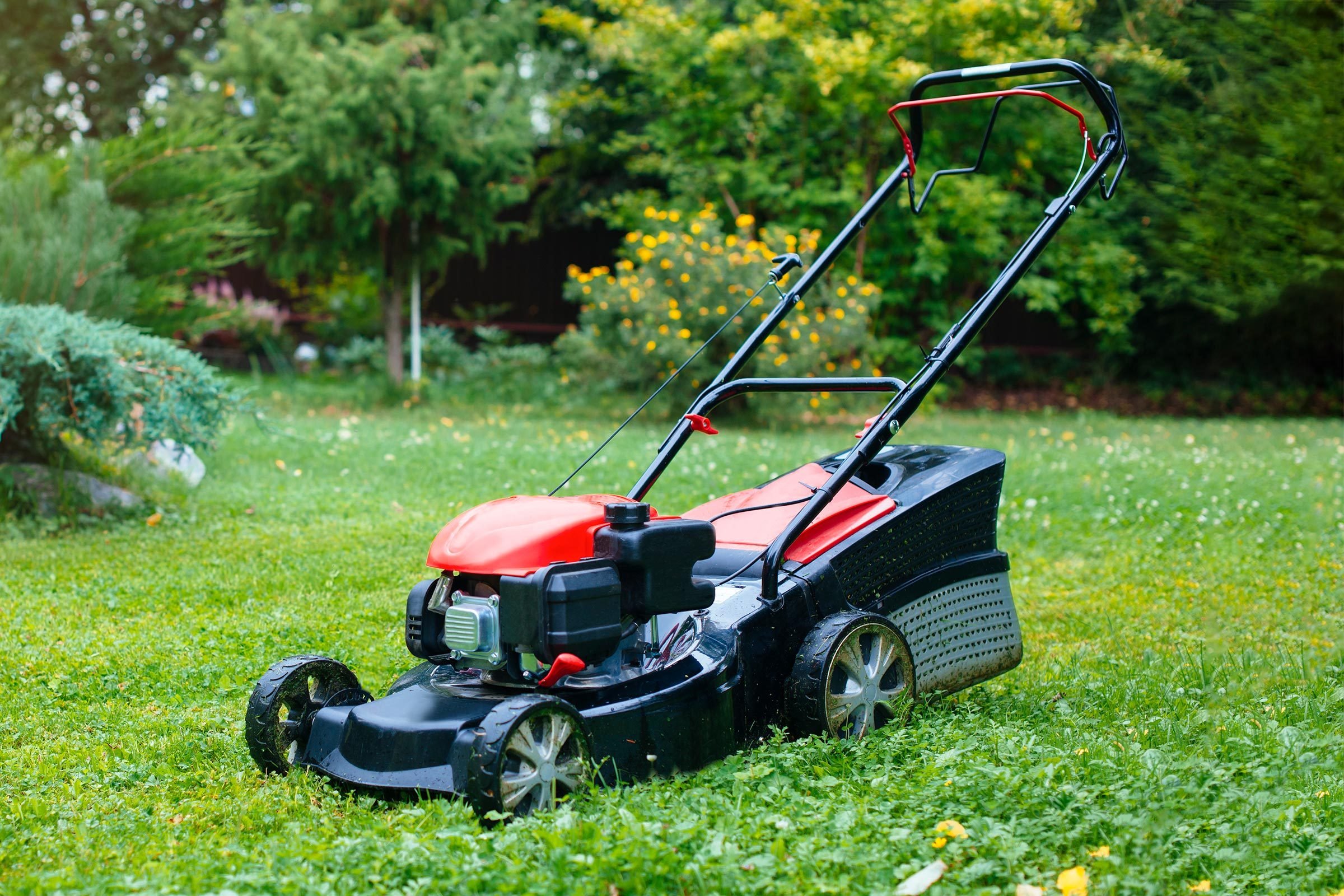Lawn Mowers: Transforming Your Lawn Care Routine

Introduction:
Maintaining a lush, healthy lawn requires regular care and
attention, and investing in the right lawn mower can make all the difference in
achieving professional-quality results. From traditional gas-powered models to
eco-friendly electric options, there are a variety of lawn mowers available to
suit different lawn sizes, terrains, and personal preferences. In this
comprehensive guide, we delve into the world of lawn mowers, exploring their
diverse types, features, maintenance tips, and the transformative impact they
bring to your lawn care routine. Join us as we uncover everything you need to
know about lawn mowers and how they can help you achieve a beautiful and
well-manicured lawn.
Understanding Lawn Mowers:
Lawn mowers are mechanical devices designed to cut grass to a
uniform height, creating a neat and manicured appearance for residential and
commercial lawns. These machines come in various types, including push mowers,
self-prop elled mowers, r iding mowers, and robotic mowers, offering a range of
features and capabilities to suit different lawn care needs and preferences.

Types of Lawn Mowers
Push Lawn Mowers:
Push lawn mowers are manually operated machines that require
the user to push the mower forward to propel the blades and cut the grass.
These mowers are ideal for small to medium-sized lawns with relatively flat
terrain, offering simplicity, affordability, and eco-friendliness without the
need for gas or electricity.
Self-Propelled Lawn Mowers:
Self-propelled lawn mowers feature a motorized drive system
that propels the mower forward, reducing the effort required by the user to
push the machine. These mowers are suitable for medium to large-sized lawns and
hilly terrain, offering convenience, efficiency, and ease of use without the
need for manual pushing.
Riding Lawn Mowers:
Riding lawn mowers, also known as lawn tractors or garden
tractors, feature a seat for the operator to sit on while driving the mower,
similar to a small vehicle. These mowers are suitable for large lawns,
commercial properties, and extensive landscaping projects, offering power,
speed, and versatility for tackling challenging terrain and heavy-duty mowing
tasks.
Robotic Lawn Mowers:
Robotic lawn mowers are autonomous machines equipped with
sensors and programming that allow them to navigate the lawn independently and
mow grass automatically. These mowers are ideal for busy homeowners who want
hands-free lawn care and maintenance, offering convenience, precision, and
efficiency in maintaining a well-groomed lawn with minimal effort.
Features and Capabilities of Lawn Mowers
Cutting Width and Height Adjustment:
Lawn mowers come with adjustable cutting widths and height
settings, allowing users to customize their mowing experience for precise
results. The cutting width determines the swath of grass that the mower can cut
in a single pass, while the height adjustment feature allows users to select
the desired grass height for optimal lawn aesthetics and health.
Mulching, Bagging, and Side Discharge Options:
Lawn mowers offer various grass disposal options, including
mulching, bagging, and side discharge capabilities. Mulching mowers finely chop
grass clippings and deposit them back onto the lawn as natural fertilizer,
while bagging mowers collect clippings in a n attached bag for easy disposal.
Side discharge mowers expel clippings to the side of the mower for efficient
grass distribution.
Engine Power and Fuel Type:
Lawn mowers are powered by engines that vary in horsepower
and fuel type, including gas-powered, electric, and battery-powered options.
Gas-powered mowers offer high performance and versatility for larger lawns but
require regular maintenance and fuel refills. Electric mowers are quieter,
eco-friendly, and easier to maintain but may have limited run times.
Battery-powered mowers offer cordless operation and convenience but may require
recharging between uses.
Drive System and Maneuverability:
Self-propelled and riding lawn mowers feature different drive
systems for maneuvering and control. Self-propelled mowers may have
front-wheel, rear-wheel, or all-wheel drive systems that provide traction and
stability on various terrains. Riding mowers featurecs hydrostatic or manual
transmission systems for smooth acceleration and precise control during
operation.
Maintenance Tips for Lawn Mowers
Regular Cleaning and Inspection:
Regular cleaning and inspection of lawn mowers help prevent
debris buildup, corrosion, and mechanical issues that can affect performance
and longevity. Users should remove grass clippings, dirt, and debris from the mower
deck, blades, and undercarriage after each use and inspect components for wear,
damage, or loose connections.
Blade Sharpening and Replacement:
Sharp blades are essential for clean and efficient grass
cutting, so users should regularly sharpen or replace mower blades as needed.
Dull blades can tear grass instead of cutting it cleanly, resulting in uneven
mowing patterns, brown spots, and increased lawn stress. Sharpening or
replacing blades ensures optimal cutting performance and lawn health.
Oil and Filter Changes:
Gas-powered lawn mowers require regular oil and filter
changes to maintain engine performance and longevity. Users should follow
manufacturer recommendations for oil type and change intervals, as well as
replace air and fuel filters as needed to ensure proper engine function and
smooth operation during mowing.
Battery Charging and Storage:
Battery-powered lawn mowers require proper charging and
storage to maintain battery life and performance. Users should fully charge
batteries before each use and store them in a cool, dry place when not in use
to prevent overheating, discharge, and dame\aage. Regular battery maintenance
ensures reliable operation and extended battery life.
Conclusion:
In conclusion, selecting the right lawn mower is essential for maintaining a beautiful, healthy lawn that enhances the curb appeal and enjoyment of your outdoor space. Whether you prefer the simplicity of a push mower, the convenience of a self-propelled mower, the power of a riding mower, or the automation of a robotic mower, there are options available to suit your lawn size, terrain, and personal preferences. By considering factors such as cutting width, height adjustment, grass disposal options, engine power, and maintenance requirements, you can choose a lawn mower that meets y our needs and helps you achieve professional-quality results with ease. Transform your lawn care routine with the right lawn mower and enjoy a well-manicured lawn that enhances the beauty and value of your property for years to come.









